Ashley National Forest
- January 29, 2024
- 0 comment
Explore the diverse wildlife and scenic beauty of Utah’s Ashley National Forest, perfect for outdoor adventures. Spanning over 1.3 million acres across northeastern Utah and into Wyoming, Ashley National Forest stands as a bastion of natural diversity and ecological richness. This vast forested area is a reservoir of biodiversity, home to a myriad of plant and animal species, some of which are unique to the region. It serves not only as a haven for wildlife but also as a prime destination for recreational activities and environmental education, attracting nature enthusiasts, researchers, and tourists alike.
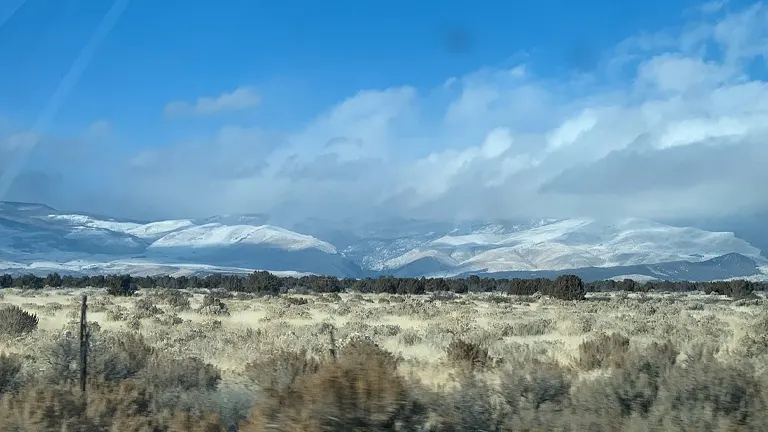
The forest is a focal point for conservation efforts, where ecological integrity is maintained through meticulous management and scientific research. Beyond its environmental significance, Ashley National Forest also holds a profound place in American history and culture, echoing the narratives of native communities, explorers, and settlers who have interacted with this landscape over centuries.
Characterizing Features of Ashley National Forest
- Size and Location Ashley National Forest is a sprawling natural expanse, covering approximately 1.4 million acres. Straddling northeastern Utah and southwestern Wyoming, it encapsulates a diverse range of landscapes. This vast area not only represents a significant portion of Utah’s natural heritage but also extends its ecological diversity into Wyoming, making it a cross-state natural treasure.
- High Uintas Wilderness Within its boundaries lies the High Uintas Wilderness, a pristine area encompassing 276,175 acres. This wilderness area is notable for its rugged character and untouched nature, representing one of the largest wilderness areas in the United States. Its protection ensures the preservation of its unique ecological characteristics and the continuation of natural processes without human interference.
- Diverse Ecosystems The forest is divided into three major areas: the Uinta Mountains, the Wyoming Basin, and the Tavaputs Plateau. Each region offers distinct ecological characteristics. From the towering peaks of the Uinta Mountains to the vast stretches of the Wyoming Basin and the rugged terrain of the Tavaputs Plateau, these ecosystems support a rich tapestry of flora and fauna.
- Elevation Range The forest’s elevation varies dramatically, ranging from 5,500 feet along the Green River to 13,528 feet at the summit of Kings Peak, Utah’s highest point. This elevation gradient creates a diverse array of habitats, from riverine ecosystems at lower elevations to alpine environments at higher altitudes.
- East-West Orientation of the Uinta Mountains A unique feature of Ashley National Forest is the east-west orientation of the Uinta Mountains, the largest such mountain range in the lower 48 states of the United States. This unusual orientation contributes to a distinctive climate and ecosystem pattern, different from the more common north-south trending ranges.
- Historical Significance The forest is steeped in history, from ancient Native American habitation evidenced by petroglyphs to the exploration and naming by European settlers like General William Henry Ashley. Its designation as a national forest in 1908 by President Theodore Roosevelt adds to its historical value.
- Recreational Diversity Ashley National Forest is a haven for outdoor enthusiasts, offering a wide range of recreational activities. Its diverse landscapes provide opportunities for hiking, camping, fishing, wildlife viewing, and winter sports, catering to various interests and skill levels.
- Role in Water Resource Management The forest’s vast watershed is vital for water resource management, supplying water for agricultural, industrial, and domestic use across several states. This makes its preservation crucial not just for ecological reasons but also for sustaining human communities.
- Cultural and Community Ties Ashley National Forest is deeply connected to the surrounding communities and native tribes. It holds cultural significance, providing a link to the past and a resource for future generations. The forest is not just a natural area but a part of the social and cultural fabric of the region.
History of Ashley National Forest
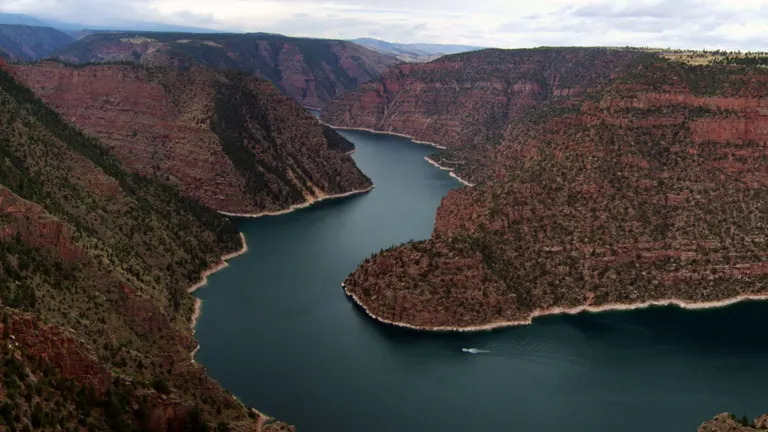
Ashley National Forest, a symbol of natural heritage and historical richness, has a storied past that intertwines with the tapestry of American history. The forest’s land has been a site of human activity for centuries, as evidenced by ancient petroglyphs, indicating its long-standing significance to Native American cultures. The first European explorers to set foot in this region were the Spanish explorers Dominques and Escalante in 1776, marking the beginning of a new era in the forest’s history. However, the forest’s name traces back to General William Henry Ashley, an early 19th-century fur trader. His expeditions through the area, notably his journey up the Green River in 1825, left an indelible mark on the region and eventually led to the forest being named after him.
The forest officially gained national recognition in 1908 when President Theodore Roosevelt designated it as a national forest, a move that highlighted its importance in the American conservation movement. Since its establishment, Ashley National Forest has experienced several boundary adjustments and expansions, notably in 1953 and 1968 under Presidents Eisenhower and Johnson, respectively. These changes reflect its growing importance as a site of natural wonder, resource management, and recreation.
Throughout its history, Ashley National Forest has been a witness to and participant in the evolving story of land use, conservation, and recreation in the American West. Its establishment and subsequent developments embody the nation’s growing awareness and appreciation of its natural resources, making the forest not only a haven for biodiversity and outdoor enthusiasts but also a living archive of American environmental history.
Unique Ecosystem of Ashley National Forest
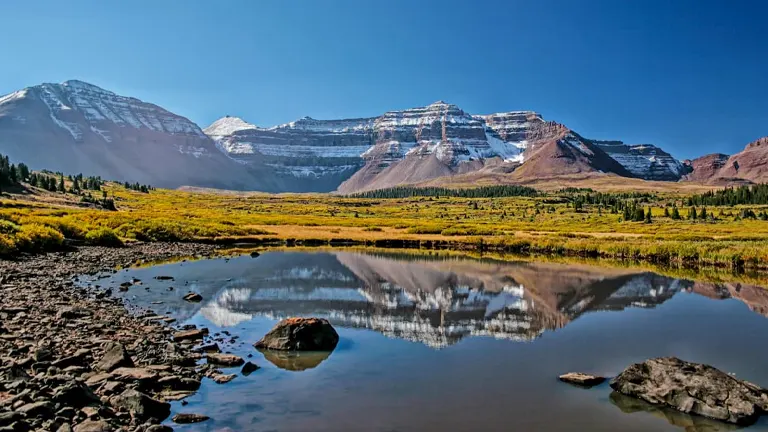
Ashley National Forest boasts a unique ecosystem, primarily due to its vast range of elevations and varied landscapes. This diversity provides habitats for a wide range of flora and fauna, contributing to the area’s ecological importance. The forest’s ecosystems range from river valleys to high mountain peaks, each supporting unique ecological communities.
Unique Location of Ashley National Forest
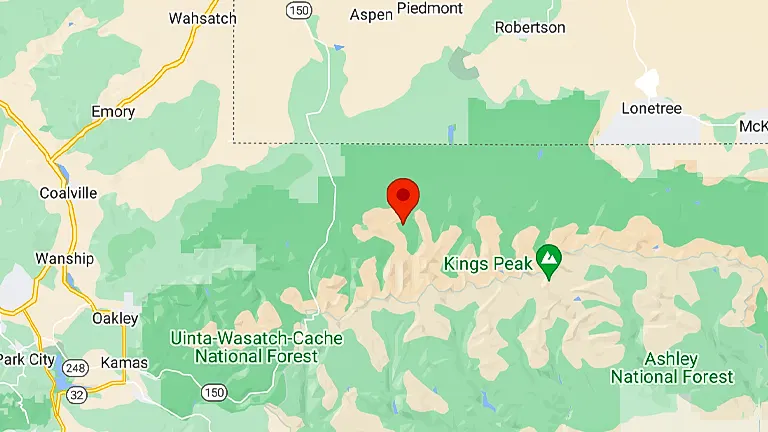
The forest’s location at the junction of the northeastern Utah and southwestern Wyoming offers a unique confluence of geographies and climates. This location contributes to the forest’s diverse ecosystems, making it a hotspot for biodiversity and a destination for nature enthusiasts.
The Importance of Conservation and Recreation in Ashley National Forest
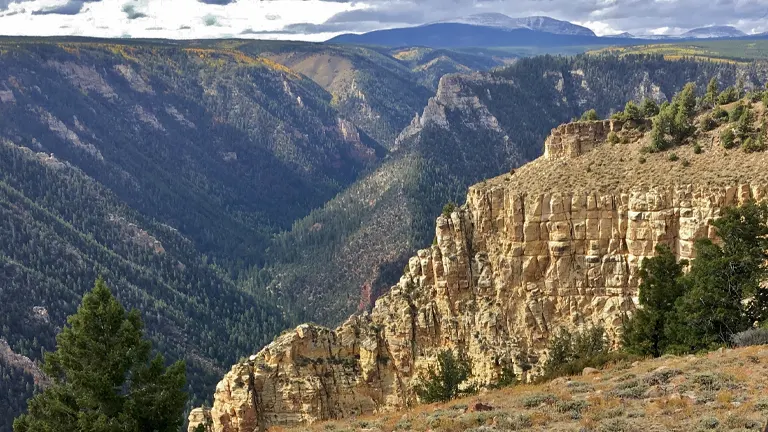
Conservation and recreation go hand in hand in Ashley National Forest. The area serves as a crucial habitat for wildlife and a natural reservoir for water resources, making its conservation vital. At the same time, the forest offers numerous recreational opportunities, attracting millions of visitors annually, highlighting the need for sustainable management of these natural resources.
Diverse Vegetation and Plant Species in Ashley National Forest
- Engelmann Spruce (Picea engelmannii): This coniferous tree dominates the higher, cooler elevations of the forest. Its presence is indicative of the cold, moist conditions prevalent in these areas, playing a crucial role in providing habitat for various wildlife species.
- Subalpine Fir (Abies lasiocarpa): Often found alongside Engelmann Spruce, the Subalpine Fir thrives in high altitude environments. Its unique pyramid shape and dense foliage are characteristic features of the forest’s alpine regions.
- Quaking Aspen (Populus tremuloides): Known for its distinctive trembling leaves, the Quaking Aspen is a deciduous tree prevalent in the forest. It’s particularly important for biodiversity, supporting a variety of wildlife and contributing to soil rejuvenation.
- Narrowleaf Cottonwood (Populus angustifolia): Typically found along rivers and wet areas, this species is vital for stabilizing riverbanks and providing habitat for birds and mammals. Its presence is a key indicator of the health of riparian ecosystems in the forest.
- Colorado Columbine (Aquilegia coerulea): This striking wildflower, with its unique blue and white petals, is native to the Rocky Mountains and flourishes in the forest. It’s a favorite among pollinators like hummingbirds and bees.
- Indian Paintbrush (Castilleja): Known for its bright red-orange bracts, the Indian Paintbrush adds vibrant color to the forest’s landscape. This plant is semi-parasitic, drawing nutrients from the roots of nearby plants, and is often found in well-drained soils.
- Lodgepole Pine (Pinus contorta): A vital species for forest regeneration, Lodgepole Pine often grows quickly after disturbances like forest fires. Its tall, straight growth is a common sight in many parts of the forest.
- Blue Spruce (Picea pungens): The state tree of Utah, the Blue Spruce, is notable for its blue-tinged needles and conical shape. It’s often found in moist, cool areas of the forest and is popular for landscaping and as Christmas trees.
- Douglas Fir (Pseudotsuga menziesii): A major timber species, Douglas Fir, with its thick bark and tall structure, plays a significant role in the forest ecosystem. It provides habitat for wildlife and is important for watershed health.
- Sagebrush (Artemisia tridentata): Common in the forest’s lower elevations, Sagebrush is crucial for the ecosystem, providing food and habitat for various wildlife. Its presence characterizes the forest’s sagebrush steppe areas.
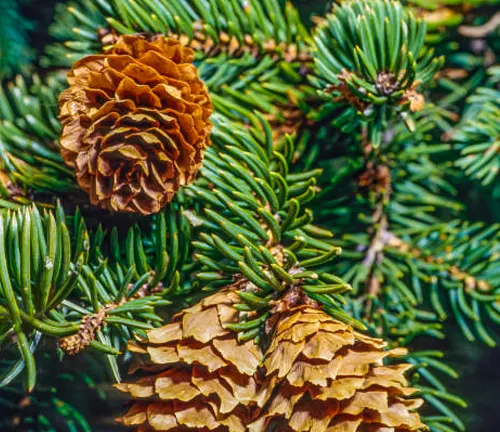
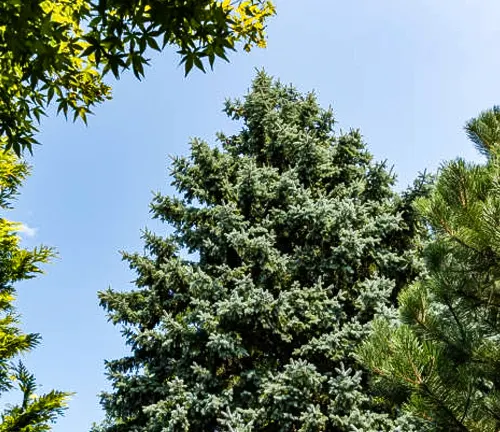
Fauna in Ashley National Forest
- Rocky Mountain Elk (Cervus canadensis nelsoni): This majestic mammal is a symbol of the American West. In Ashley National Forest, these elks are known for their impressive antlers and are commonly seen grazing in meadows and open forest areas, playing a vital role in the ecosystem as herbivores.
- Moose (Alces alces): The largest member of the deer family, Moose are often found near water sources like lakes and streams within the forest. Their presence indicates healthy riparian habitats and they are key browsers, influencing the vegetation structure.
- Mule Deer (Odocoileus hemionus): Named for their large, mule-like ears, Mule Deer are adaptable animals commonly seen across various habitats in the forest. They are important for seed dispersal and as prey for large predators.
- Black Bear (Ursus americanus): These omnivorous mammals, although elusive, are an integral part of the forest’s ecosystem. They play a critical role in nutrient cycling and forest health through their varied diet and foraging habits.
- Mountain Lion (Puma concolor): Also known as cougars or pumas, Mountain Lions are top predators in Ashley National Forest. Their presence is crucial for maintaining the balance of the ecosystem by controlling the population of herbivores.
- Bald Eagle (Haliaeetus leucocephalus): A symbol of national pride, the Bald Eagle can be spotted near lakes and rivers within the forest. As apex predators, they play a significant role in maintaining healthy fish populations and ecological balance.
- Golden Eagle (Aquila chrysaetos): Majestic in flight, Golden Eagles are another apex predator in the forest. They are known for their impressive hunting skills and have a significant impact on the population dynamics of small mammals and birds.
- River Otter (Lontra canadensis): Found along the rivers and streams of the forest, River Otters are playful mammals that are indicators of water quality. Their activities are crucial for maintaining healthy aquatic ecosystems.
- Beaver (Castor canadensis): Beavers are known as ecosystem engineers. Their dam-building activities create wetlands, which serve as habitats for numerous species and help in water purification and storage.
- American Pikas (Ochotona princeps): These small, mountain-dwelling mammals are often found in rocky areas. Pikas are sensitive to temperature changes, making them important indicators of ecological health and climate change impacts in the forest.
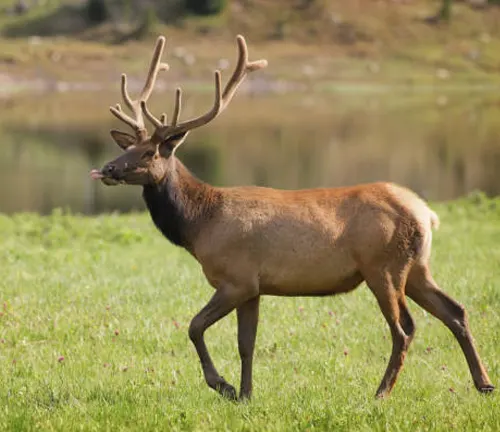
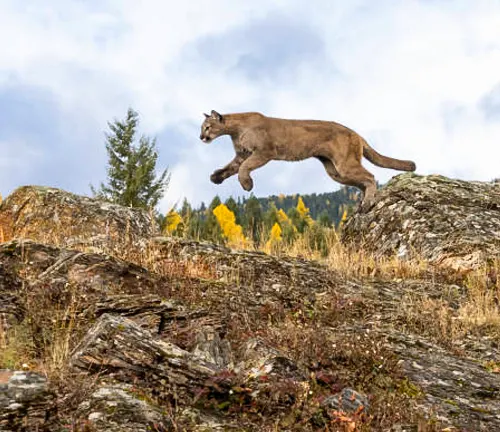
Attractions in Ashley National Forest
Flaming Gorge National Recreation Area: This stunning recreation area is a centerpiece of Ashley National Forest, known for the Flaming Gorge Reservoir and its striking red sandstone cliffs. It’s a hub for water-based activities like fishing, boating, and kayaking. The gorge got its name from John Wesley Powell, who was struck by the fiery appearance of the red rock at sunset during his 1869 expedition. The area also offers picturesque campsites, hiking trails, and abundant wildlife viewing opportunities, making it a must-visit destination for nature enthusiasts.

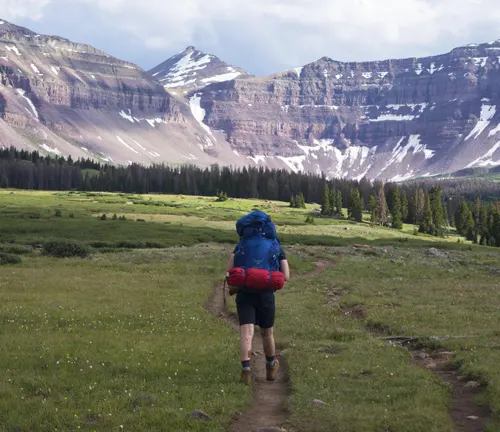
Kings Peak: As the highest point in Utah, Kings Peak stands at 13,528 feet and is a magnet for hikers and mountaineers. The peak is part of the Uinta Mountains, offering challenging trails leading to breathtaking panoramic views. The journey to the summit is not just a physical challenge but also an opportunity to immerse oneself in the diverse ecosystems of the forest, from dense forests to alpine tundra.
High Uintas Wilderness: This wilderness area, sprawling over 276,175 acres within the forest, is a haven for those seeking solitude and unspoiled natural beauty. It’s known for its pristine lakes, rugged mountain terrain, and diverse wildlife. The area is a prime spot for backpacking, horseback riding, and fishing, offering a true wilderness experience.
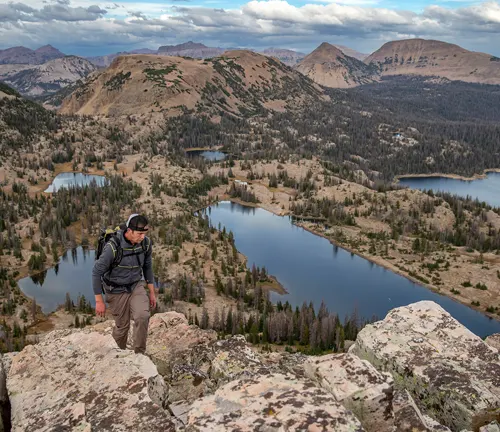
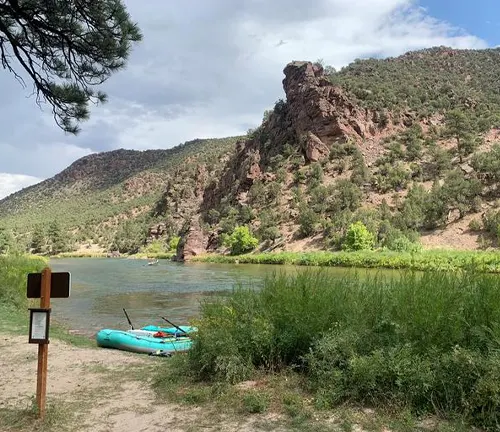
Green River: The Green River, flowing through the forest, is renowned for its world-class fishing, especially for trout. Its scenic river corridor is also popular for rafting and kayaking, providing thrilling water adventures set against the backdrop of the forest’s spectacular landscapes. The river’s ecosystem supports a rich biodiversity, making it a key ecological feature of the forest.
Sheep Creek Geological Loop: This scenic drive offers a journey through millions of years of geological history. The loop takes visitors through stunning rock formations and canyons, with opportunities to spot wildlife and enjoy picturesque viewpoints. It’s an excellent way for visitors to experience the geological diversity of the forest without straying far from the road.
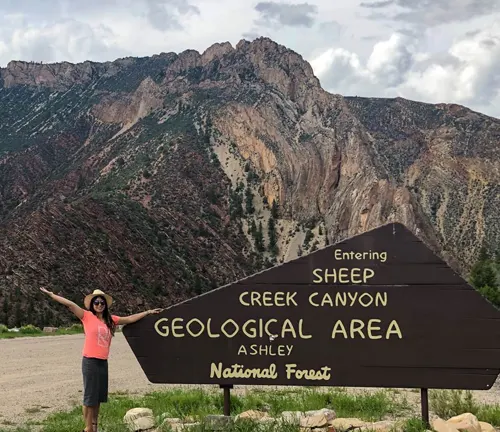
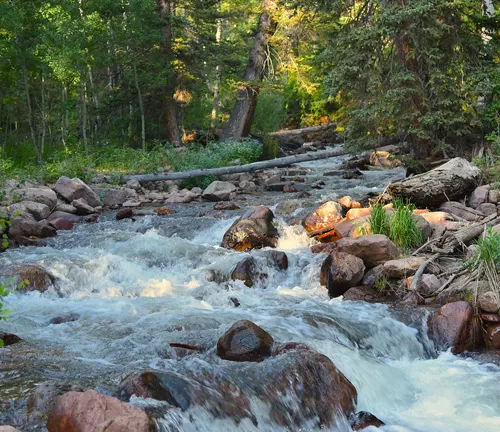
Red Cloud Loop: This scenic drive winds through diverse landscapes, offering views of the Uinta Mountains, vast basins, and forested areas. Along the way, visitors can see a range of vegetation and wildlife, as well as historical sites. It’s a perfect attraction for those who want to explore the forest’s beauty by car.
Dinosaur National Monument: While not entirely within Ashley National Forest, this nearby monument is an unmissable attraction for history and dinosaur enthusiasts. The monument showcases a vast collection of dinosaur fossils and petroglyphs, providing a window into the prehistoric past and the early human history of the region.
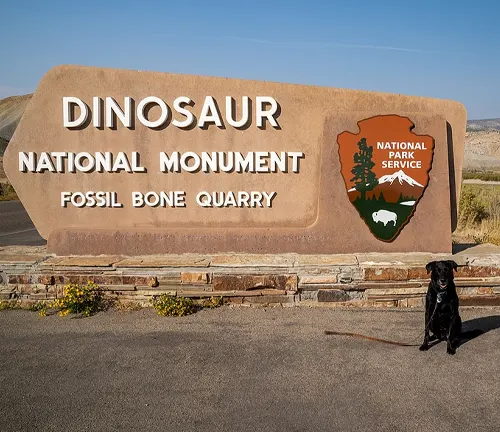
Recreational Activities in Ashley National Forest
- Hiking: Ashley National Forest offers over 1,000 miles of trails, catering to all levels of hikers. These trails traverse through diverse landscapes, from lush meadows and dense forests to rugged mountain terrain. Popular trails include those leading to Kings Peak and in the High Uintas Wilderness. Hiking these trails not only provides physical challenges but also offers opportunities to witness the forest’s rich biodiversity and breathtaking natural beauty.
- Fishing: The forest is a haven for anglers, with numerous lakes and streams, including the renowned Green River and Flaming Gorge Reservoir. These waters are teeming with trout species, making it an ideal destination for both fly fishing and general angling. Fishing in these pristine waters is not just a sport but an immersive experience in nature, surrounded by stunning scenery.
- Camping: With various campgrounds spread throughout the forest, camping is a popular activity. These range from developed sites with amenities to primitive backcountry areas for a more secluded experience. Camping in Ashley National Forest allows visitors to fully immerse themselves in the tranquility and beauty of the natural surroundings, under starlit skies.
- Boating and Water Sports: The Flaming Gorge Reservoir in the forest provides excellent opportunities for boating, kayaking, and water skiing. Its vast expanse of water set against the backdrop of dramatic cliffs makes it a picturesque location for water enthusiasts. The reservoir’s marinas and boat launches facilitate easy access for a day of fun on the water.
- Wildlife Viewing and Bird Watching: The diverse habitats in Ashley National Forest make it a prime spot for wildlife viewing and bird watching. Enthusiasts can spot a variety of mammals, birds, and other wildlife, including elk, moose, deer, and raptors. This activity offers a peaceful way to connect with nature and observe wildlife in its natural environment.
- Winter Sports: During the winter months, the forest transforms into a snowy wonderland, offering activities like cross-country skiing, snowshoeing, and snowmobiling. The forest’s Yurts provide unique accommodations for overnight stays, enhancing the winter adventure experience in the midst of serene and snow-covered landscapes.
- Photography and Scenic Drives: For those who enjoy capturing natural beauty through a lens, the forest offers endless opportunities. Scenic drives like the Sheep Creek Geological Loop and Red Cloud Loop are perfect for photographers and nature lovers, providing stunning vistas and opportunities to photograph the forest’s diverse flora, fauna, and geological features.
- Horseback Riding: Horseback riding trails are available, offering a unique way to explore the forest’s backcountry. Riding through the forest on horseback is a throwback to a bygone era and allows visitors to cover more ground while enjoying the natural beauty of the area.
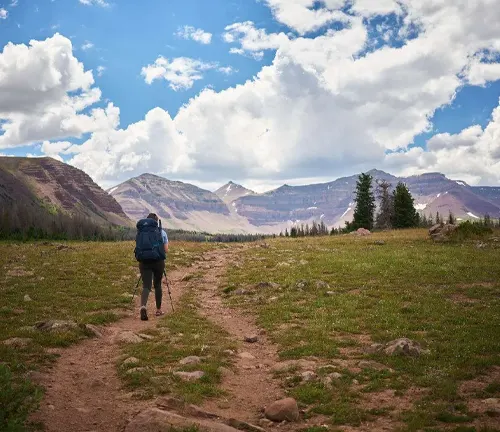
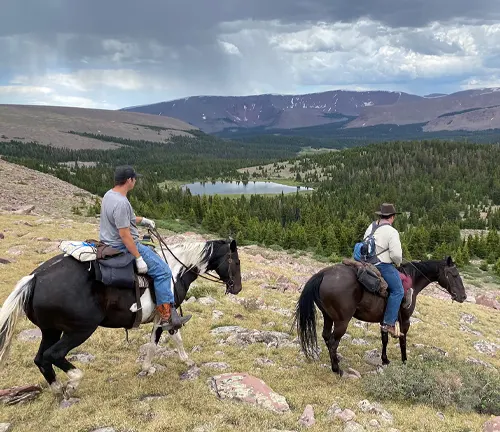
Different Facilities and Amenities in Ashley National Forest
- Campgrounds: Ashley National Forest offers a wide range of camping facilities, from developed campgrounds with amenities like restrooms and picnic tables to more primitive, backcountry sites. These campgrounds cater to different camping experiences, whether you’re looking for a family-friendly site or a secluded spot for a more rustic experience. Campgrounds like Mustang Ridge and Lodgepole, located near Flaming Gorge, are particularly popular for their scenic locations and access to recreational activities.
- Visitor Centers: The forest’s visitor centers, such as the Flaming Gorge Visitor Center and the Duchesne Ranger District office, are vital resources for guests. They provide valuable information, educational exhibits, maps, and permits. Friendly staff offer guidance on hiking trails, wildlife viewing, and interpretive programs, enhancing the visitor experience and promoting safe and responsible enjoyment of the forest.
- Picnic Areas: Scattered throughout the forest are numerous picnic areas, perfect for family outings or a relaxing break in nature. These areas, like the Antelope Flat and Greens Lake, are equipped with tables and often have restroom facilities, making them convenient spots to enjoy a meal surrounded by the forest’s natural beauty.
- Boat Ramps and Marinas: For water recreation enthusiasts, the Flaming Gorge Reservoir in the forest features boat ramps and full-service marinas. These facilities provide boat launching, rentals, storage, and maintenance services. The marinas also often have general stores, offering supplies and fishing gear, enhancing the boating and fishing experience in the forest.
- Trails for Hiking and Biking: The forest boasts a network of trails for both hiking and mountain biking. These trails, like the Highline Trail in the Uintas, cater to various skill levels and offer different experiences, from easy walks to challenging mountain bike routes. The trails are well-maintained, ensuring a safe and enjoyable experience for all visitors.
- Winter Sport Facilities: In winter, the forest transforms into a playground for snow sports. Facilities like cross-country ski trails and areas for snowshoeing and snowmobiling are available. The Yurts in the forest provide unique lodging options for a cozy winter experience amidst the snowy landscape.
- Wildlife Viewing Stations: To enhance wildlife observation opportunities, the forest has established viewing stations in areas known for high wildlife activity. These stations allow visitors to safely observe animals like elk, deer, and birds in their natural habitat, offering a chance to connect with nature and learn about local wildlife.
- Interpretive Sites: The forest features several interpretive sites where visitors can learn about the area’s natural history, geology, and cultural heritage. These sites often have informative signage and exhibits, providing an educational dimension to the recreational experience.
Tips and Advice for Visiting Ashley National Forest
- Check Weather Conditions: Before your trip, check the local weather forecast. The forest’s weather can vary greatly due to its diverse elevations and landscapes. Preparing for sudden weather changes, especially in higher altitudes, ensures a safe and enjoyable visit.
- Respect Wildlife: While wildlife sightings can be a highlight, it’s important to view animals from a safe distance. Feeding or approaching wildlife is not only dangerous but also disrupts their natural behavior. Remember, you’re a guest in their home.
- Follow Leave No Trace Principles: Preserve the beauty of the forest for future visitors by following Leave No Trace principles. This includes packing out all trash, staying on trails, and not disturbing natural habitats or historical sites.
- Prepare for Outdoor Activities: If you plan on hiking, fishing, or engaging in other outdoor activities, ensure you have the necessary equipment and knowledge. This includes maps, proper gear, and familiarity with the area’s regulations and permits required.
- Stay Hydrated and Energized: Bring plenty of water and snacks, especially if you’re hiking or engaged in physical activities. High altitudes can accelerate dehydration and fatigue, so regular hydration and energy replenishment are crucial.
- Be Prepared for Altitude: The high elevation of some areas in the forest can affect visitors, especially those not accustomed to high altitudes. Acclimatize gradually, and be aware of altitude sickness symptoms.
- Camping Etiquette: If camping, make sure to use designated campsites and follow all campground rules. This includes proper food storage to avoid attracting wildlife, especially bears.
- Plan Your Visit: Given the forest’s vast size, plan your visit ahead. Decide which areas you want to explore and how much time to allocate for each. The forest offers a wide range of experiences, from leisurely scenic drives to challenging hikes.
Exploring the Flaming Gorge National Recreation Area is highly recommended for its stunning beauty and variety of activities. Hiking to Kings Peak is also suggested for those seeking a challenging adventure with rewarding views.
Conclusion
In essence, Ashley National Forest stands as a remarkable testament to the splendor and diversity of nature. Its unique landscapes and rich ecological tapestry not only offer a haven for wildlife and nature enthusiasts but also serve as a crucial reminder of the importance of environmental stewardship. This forest embodies the beauty and resilience of the natural world, urging us to cherish and protect these invaluable natural resources for generations to come.
FAQs
- What is the highest peak in Ashley National Forest?
Kings Peak is the highest point in Ashley National Forest, and also the highest in Utah, with an elevation of 13,528 feet. - Can I see ancient petroglyphs in the forest?
Yes, Ashley National Forest is home to numerous ancient petroglyphs, offering a glimpse into the region’s rich Native American history. - Are there any designated wilderness areas within the forest?
Yes, the High Uintas Wilderness, covering 276,175 acres, is a designated wilderness area within Ashley National Forest, known for its pristine natural state. - Is fishing allowed in the forest, and what species might I find?
Fishing is a popular activity in Ashley National Forest. Anglers can find species like Colorado River Cutthroat Trout in the forest’s rivers and lakes. - What kinds of wildlife might I encounter in the forest?
Visitors to the forest might see wildlife such as Rocky Mountain Elk, Moose, Mule Deer, various bird species, and occasionally black bears and mountain lions. - Are there opportunities for winter sports in Ashley National Forest?
Yes, the forest offers winter sports opportunities, including cross-country skiing and snowshoeing, with facilities like Yurts available for overnight stays. - What are some of the most popular hiking trails in the forest?
Popular hiking trails include those leading to Kings Peak and others within the High Uintas Wilderness, offering a range of difficulty levels and scenic views. - How can I ensure a safe and environmentally friendly visit to the forest?
To ensure a safe visit, always stay on designated trails, prepare for weather changes, and respect wildlife. For environmental friendliness, follow Leave No Trace principles and avoid disturbing natural habitats.
In closing, Ashley National Forest stands as a beacon of natural splendor and a haven for adventurers and nature lovers alike. Its diverse landscapes and rich history capture the essence of the American wilderness. As we bid farewell to its towering peaks and tranquil valleys, let’s carry forward the spirit of conservation and the appreciation for the natural world that Ashley National Forest so beautifully embodies.


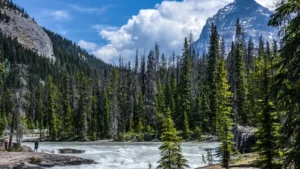


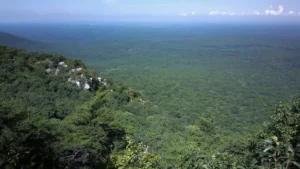
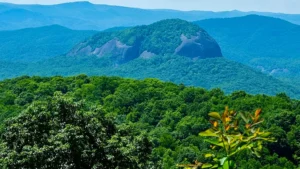
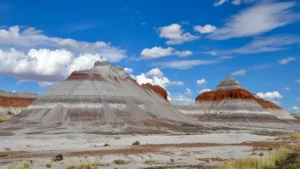
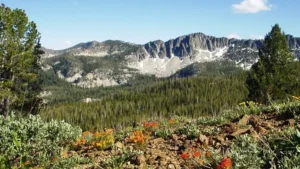
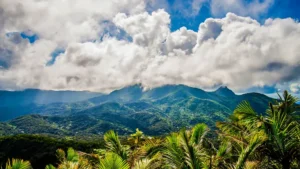
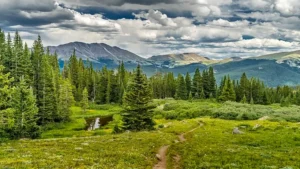
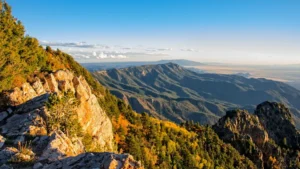
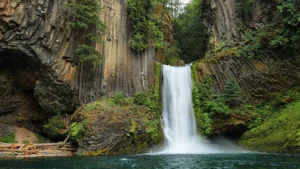
Leave your comment